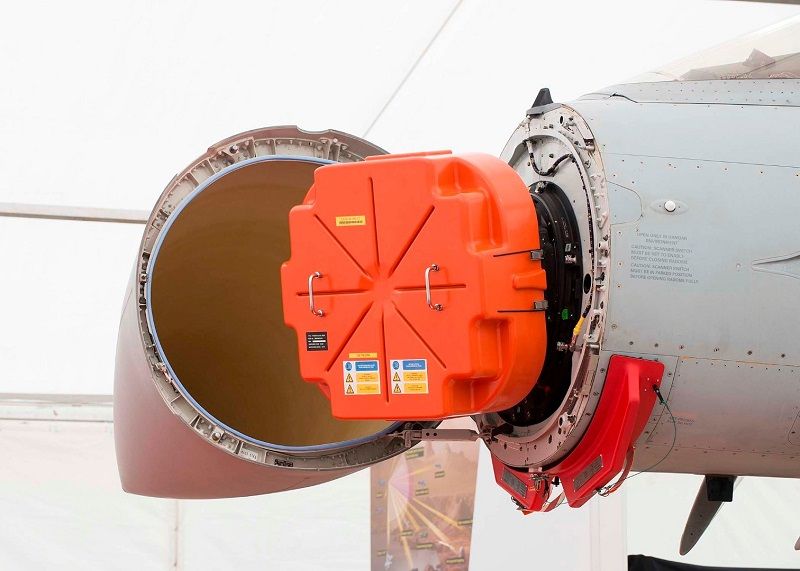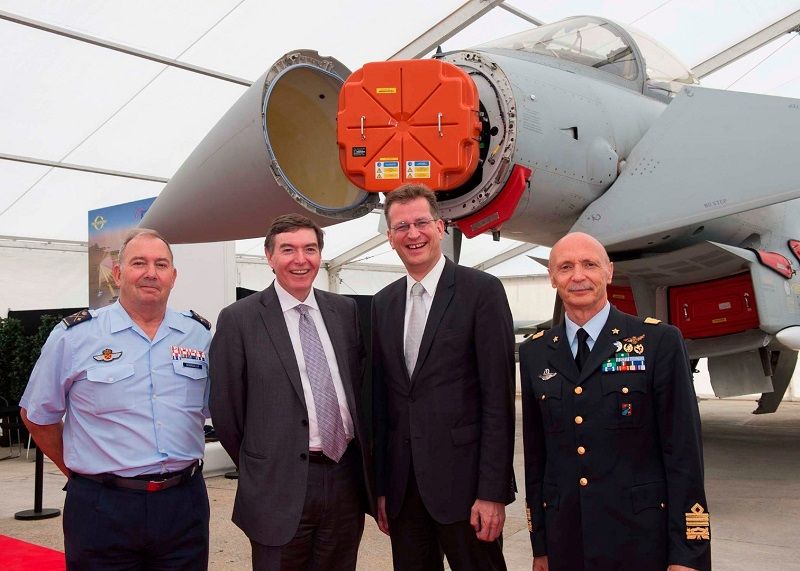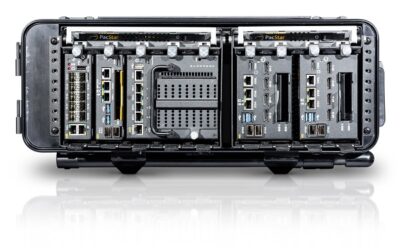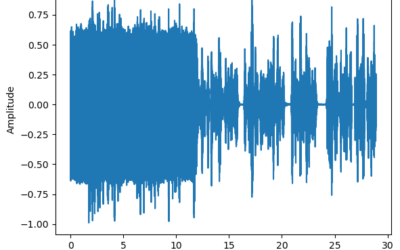TYPHOON CAPTOR-E AESA radar programme progressing remarkably well
Anyone who has followed the Eurofighter TYPHOON programme will have become used to hearing a litany of delays and technical problems, and will be accustomed to the routinely late delivery of new capabilities and weapons integrations. Many may have suspected that the programme to integrate an (AESA) or E-SCAN radar might be suffering the same kind of problems and delays, especially in the light of the lack of information emerging from the companies involved.
The CAESAR (CAPTOR AESA Radar) demonstrator was flown extensively in 2006 and 2007, but it was not until 2014 that a more production representative radar was unveiled fitted to the British TYPHOON test aircraft, IPA5 (ZJ700), and this radar did not begin flight trials in the TYPHOON until 8 July 2016 – two years after the Farnborough reveal rather than the ‘weeks or even months’ that had been confidently predicted. Silence since then may have led some to suspect that more delays and problems were being encountered behind the scenes, especially since the four ‘core nations’ have conspicuously failed to sign up to acquire an AESA radar for their TYPHOON fleets.
But in fact, the TYPHOON CAPTOR-E AESA radar programme is progressing remarkably well, and work is underway on several fronts.
The Euroradar consortium is currently working on a fully-funded common AESA development programme for the four nations, delivering an E-scan radar that will mature AESA technology and that will transition the TYPHOON from an M-scan to an E-scan radar.
The CAPTOR-E radar is based on the existing ‘back end’ of the mechanically-scanned (M-scan) CAPTOR radar, with a new AESA antenna mounted on an innovative repositioner. This gives the radar an unmatched field of regard without compromising performance and reliability.
Although none of the four core Eurofighter partner nations have confirmed an order for E-scan radars, Euroradar has secured production contracts based on that development programme.
Euroradar now has a production build programme for 28 E-scan radars from Eurofighter/Leonardo Aircraft as the prime contractor for Kuwait and from BAE Systems for the 24 radars for Qatar. Leonardo sources are confident that the required timescales will be achieved for delivering radars to the prime contractors for integration with the EUROFIGHTER weapons system and that aircraft for both customers will have E-Scan radar fitted from day one.
The same basic radar, known as Radar One Plus, is the basis of both the four-nation development programme and the production programme for Kuwait and Qatar, with the same hardware and the same performance, although additional documentation and performance data will be required to satisfy the four nation requirements as set down by NETMA.
The CAPTOR-E radar that is now flying represents production hardware, whose design has been frozen, while the software is being developed and matured. Euroradar has delivered a number of software sets to the flight test programme which has then been integrated and flown before being modified in the light of the flight trial results.

The end result is, apparently, “a really good radar,” that is likely to deliver all of the performance that TYPHOON will need for its required air-to-air and air-to-ground capabilities.
Euroradar must be hoping that the Eurofighter partner nations will soon make commitments to procure Radar One Plus for their own EUROFIGHTER fleets – hopefully in time for production of those radars to neatly dovetail with deliveries for Kuwait and Qatar.
The new E-scan radar can be fitted to new production TYPHOONs and to any aircraft built to Tranche 3 standards, which incorporated cooling and electrical power provision for the retrofit of an AESA radar, as well as the necessary structural changes needed in order to carry the additional weight of an AESA array and repositioner.
112 Tranche 3 aircraft were delivered to the four nations, including 40 of the UK’s 160 aircraft, 31 of Germany’s 143 aircraft, 21 of Italy’s 96 aircraft, and 20 of Spain’s 73 aircraft. Together with 24 of 72 Saudi Arabian TYPHOONs and all 12 aircraft delivered to Oman these represent the initial market for an AESA retrofit programme.
All new production TYPHOONs will be delivered with (or at least fitted for) an E-Scan radar, including the new batch of 48 aircraft covered by the memorandum of intent signed during Saudi Crown Prince Mohammed bin Salman’s visit to the UK. On 9 March 2018. The total could be further expanded by a putative Spanish requirement for an F/A-18 replacement (68-72 aircraft) and by extra aircraft for the Luftwaffe, which could acquire further new TYPHOONs to replace its Tranche 1 aircraft, and separately to replace its TORNADO fighter-bombers. These German requirements could total more than 120 aircraft.

The big question concerns the possibility of retrofitting an E-scan radar to the Tranche 2 standard aircraft, some 227 of which were delivered to the four core nations, plus 48 more to the Royal Saudi Air Force. These outnumber the Tranche 3 fleet in all of these air forces. They were not built with cooling and electrical power provision for AESA, but did have a strengthened forward bulkhead in anticipation of an eventual E-scan retrofit. MONCh understands that BAE Systems has done some work to examine the feasibility of an AESA upgrade for these aircraft.
The four nations have been slow to commit to equipping the TYPHOON with an E-scan radar for a variety of quite different reasons. For many years, such an upgrade was not viewed as being a priority, since the aircraft’s very high performance M-scan radar was still operating well in excess of any other mechanically scanned radar in the world. Why change something that is already very high performing sensor, people asked?
In November 2018, an experienced Luftwaffe TYPHOON pilot told MONCh that he hadn’t found himself, “in one situation where I wanted or needed E-scan,” and instead highlighted the excellent performance and capability of the M-scan radar, while bemoaning the absence of the PIRATE IRST on German EUROFIGHTERs, and the relative shortage of LITENING LDPs (laser designator pods) for passive long range visual identification.
At the opposite end of the spectrum, some RAF pilots with experience of operating over Syria view the M-scan radar as being on the verge of complete obsolescence, with an inherently greater vulnerability to jamming and an inability to fully exploit the performance and capabilities of new weapons, including the METEOR BVRAAM. For some within the RAF, even the Radar One Plus represents an inadequate answer to future requirements, and this underpins the UK’s unwillingness to sign up to a common four nation radar based on this standard, and explains the UK’s long-standing aspiration to acquire a more advanced E-scan radar, with expanded electronic attack and other advanced capabilities.
Thus, although the UK is participating in the four nation E-Scan development programme, a more advanced derivative of Captor-E, currently known as ‘Radar Two,’ is also being planned to meet UK requirements.
As with the quadrinational Radar One Plus programme, there is no funded production programme for Radar Two. A yawning gap in the UK defence budget, together with the uncertainties surrounding Brexit and the Comprehensive Spending Review has pushed the Modernising Defence Programme (launched in July 2018) to the right, and no decision is likely before the planned 2020 Strategic Defence and Security Review.
Thus, while the UK has a requirement for an ambitious and advanced E-scan capability, within a particular timeframe, there is little clarity as to what the level of commitment and budgets will be, going forward, and even as to what the required timeframe actually is.
But despite this lack of clarity, Des Balmforth, Vice President for Airborne AESA Radar for the Airborne and Space Systems Division of Leonardo has confirmed that the company is ‘on contract’ for risk reduction work in support of the UK Radar Two AESA.
Under the E-Scan Extended Assessment Phase (EAP) project announced by David Cameron at Farnborough in July 2016, Leonardo is maturing the required technology under a series of incrementally funded programmes and risk reduction activities. As such EAP is the successor to the former Bright Adder TDP (Technology Demonstration Programme), which developed and matured certain of the techniques and technologies that would be required for Radar Two, and which effectively morphed into the Extended Assessment Phase.

But while Bright Adder concentrated on the various separate elements that make up an overall system, such as the processor, transmitter, antenna, rotation system, etc. the E-Scan Extended Assessment Phase project will concentrate on a complete system, and is moving towards a ground based radar testbed system that will go into Leonardo’s laboratories in Edinburgh for testing.
The intent is to ensure that when the UK MoD makes its final decision as to exactly what it wants and when they want it, industry will be able to provide an overall programme that it can confidently stand behind.
Little is known about the planned Radar Two. This is, in part, because much remains to be fully defined, while some of the technologies required have yet to reach maturity.
There are also certain sensitivities and classifications that prevent detailed analysis of the proposed radar and its capabilities, while there is also a commercial imperative for Euroradar to avoid ‘talking up’ this future radar, which remains many years from service, in a way that might cannibalise sales of Radar One Plus. This radar is, according to one programme insider, “a real thing, happening very soon, and it’s going to be transformational for TYPHOON!”
Radar Two will be an incrementally improved version of CAPTOR-E, and will incorporate maximum commonality with Radar One Plus, especially in its hardware and operating interfaces, though it is likely to have a different antenna. This will still incorporate a repositioner, but may not have embedded IFF on the antenna, which can be disruptive to using the array as a means of communicating with other aircraft.
At one time, Radar Two was seen as being likely to be a UK-only project, but it formed part of the unsuccessful offering in the Belgian campaign, and may be specified by Saudi Arabia for its new batch of 48 aircraft. There have been reports that the first of these aircraft could be delivered with an interim fit of ex-RAF Tranche 1 M-scan radars taken from the ten or so two-seaters that have been withdrawn from use and stripped for spares. They would then undergo a later retrofit of Radar Two.
Italy has reportedly showed interest in the Radar Two while more recently, it has been reported that German defence minister Ursula von der Leyen may favour a buy of 40 TYPHOONs with Radar Two to replace the Luftwaffe’s ageing TORNADOs.
Captor-E in IPA-5 TYPHOON.
Jon Lake
























